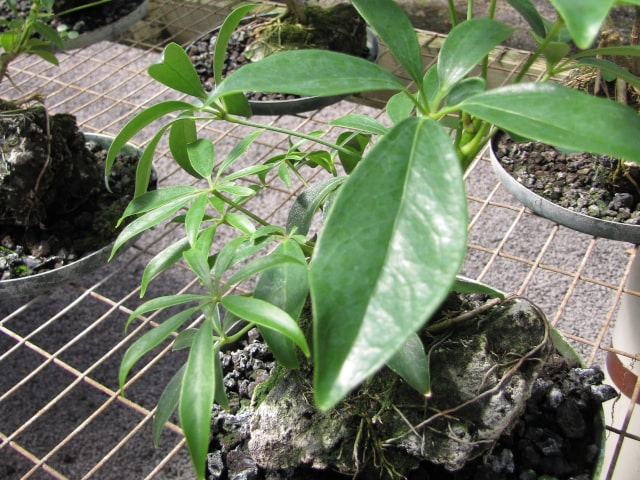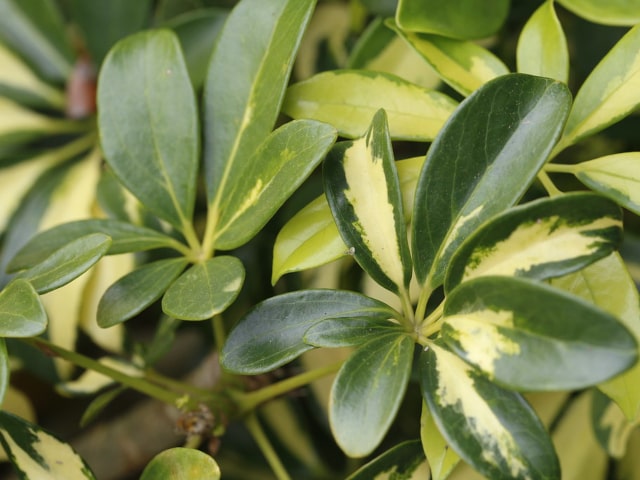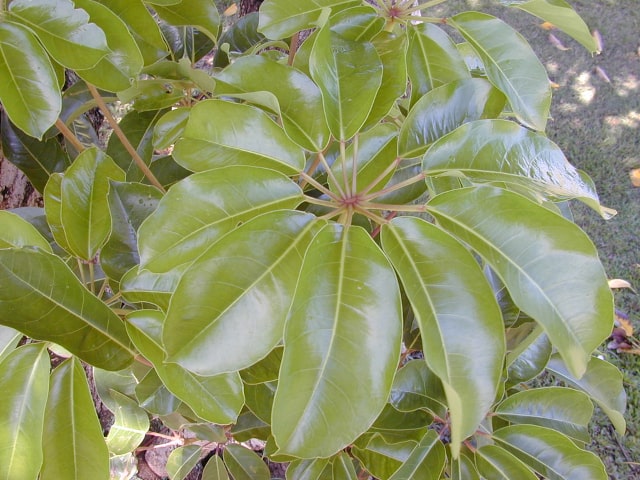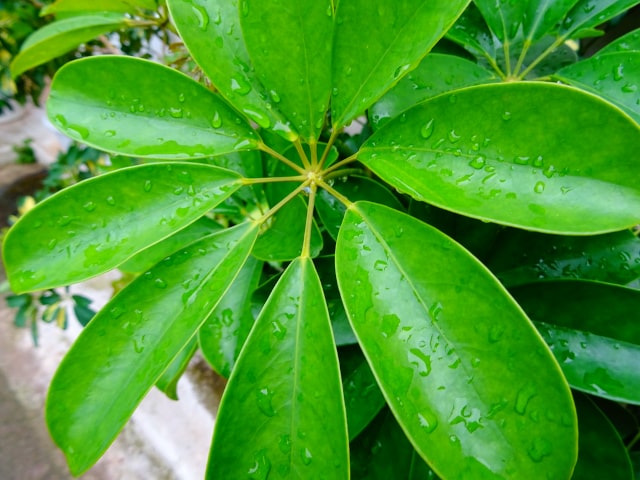
The Umbrella Tree Plant is a colorful foliage houseplant many people love to grow in their home. There are many different varieties of Umbrella Tree Plants you can find in local garden centers and nurseries. Perhaps the most interesting of them all is the Dwarf Hawaiian Schefflera. This plant is also known as the Dwarf Schefflera, Dwarf Scheff, Arb's and Dwarf Umbrella Tree. This plant is the "dwarf" variety of the regular Umbrella Plant (Schefflera actinophylla).
It's also interesting to note that Dwarf Umbrella Tree has its own varieties, so there are many different ones to choose from. Since they are so popular it's relatively easy to find them in most garden centers and nurseries.
Common Dwarf Umbrella Tree Varieties
Here is a list of the most common varieties of Dwarf Umbrella Trees you can find in nurseries and garden centers:
- Arboricola. This is a regular green variety.
- Renate Green. This variety has more ripple on the leaves.
- "Gold Capella". This variety has yellow or gold and green leaves.
- "Trinette". This variety has cream and green leaves.
- "Dazzle". This variety has some leaves almost completely creamy white.
In addition to these popular varieties there are also some varieties that are currently being introduced and tested.
Different Forms of Umbrella Tree Plants
There are many forms of Dwarf Umbrella plants, and they can also be propagated in many ways: using seeds, cuttings and air-layers. After propagation, the plants are grown in full sun where they can thrive and grow into healthy, strong plants. When buying your Umbrella Tree in a garden center it will usually be in the bush form.
If you buy your plant in the bush form you will need to prune it. Pruning will make it full, round and thick. The plant's leaves will measure about 4 to 6 inches across, forming a "fingered umbrella".
There are also Dward Umbrella Plants grown in tree forms, bonsai and braided like Ficus trees. If you care for this plant properly it can live for years indoors.
As you can see, there are many different forms to choose from. Whatever form you choose, you need to remember that you always need to acclimatize your plants when you move them indoors. This means that it will probably thin out and lose some leaves during acclimatization.
General Care Requirements
Dwarf Umbrella plants have many different light requirements, sometimes depending on the variety. Generally speaking, the Schefflera arboricola plant can adapt to a wide range of light levels. However, it prefers higher light levels. This particularly goes for certain varieties, such as Gold Capella and Trinette.
It's important to understand that the branches will easily grow and stretch "out of shape" if you don't prune the plant. This is why selective pruning is very important. Just like Ficus, the Dwarf Umbrella plant can handle radical pruning so you shouldn't be afraid to prune as much as you see fit. Your plant will be able to recover quickly.
Dwarf Umbrella plants have extensive root systems and can even grow by climbing a tree. They will also seek water when they are grown outside. When grown indoors, they don't like to sit in water, so it's important to never let your plant sit in water. This plant likes to be moist but not wet, so it's something you should pay attention to. Too much water can damage your plant's roots and bring other problems. In case you notice the leaves turning black or dropping off, it's a sure sign that the soil is staying too wet and moist. If the leaf tips wrinkle, it's a sign of underwatering.
Common Pests
The Umbrella Tree plant belong to the Aralia family. Just like many of the plants in this family, they are prone to pests in the form of spider mites.
To avoid these pests, you need to clean the plant regularly if you keep it indoors. When inspecting and cleaning your plant, don't forget to check out the leaves' undersides, because it's the place when mites like to hang out.
If you notice these pests, consult your local garden center for a safe preventive measure or a product, such as "Safer Soap" or organic insecticide so you can control the pests successfully.
Quick Tips
Here is a quick look on the basic care requirements of your Dwarf Umbrella plants:
- Never keep your plant wet
- Place it in a bright area
- Inspect your plant for spider mites
- Don't hesitate to prune your plant when needed
Follow these simple tips and your Dwarf Umbrella plant will thrive.
Photo credit: Forest and Kim Starr




0 Comments